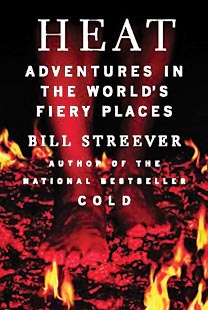 Heat, as every grade-schooler knows, is an expression of energy, and from a human perspective it has feet in two worlds. One is scientific—the realm of hadron colliders and theoretical temperatures at the core of the sun. The other is deeply and pressingly practical. How does one survive a northern winter? When does a fever become life-threatening? How do we stop the planet from roasting?
Heat, as every grade-schooler knows, is an expression of energy, and from a human perspective it has feet in two worlds. One is scientific—the realm of hadron colliders and theoretical temperatures at the core of the sun. The other is deeply and pressingly practical. How does one survive a northern winter? When does a fever become life-threatening? How do we stop the planet from roasting?
In large measure, evolution and civilization are stories of our capacity to manage heat, which makes it a useful lens through which to view progress. Streever traces that arc in his mesmerizing exposition, from the million-year-old campfire remains of Homo erectus to the seven-trillion-degree reactions measured at the Brookhaven particle accelerator in Upton, N.Y. Like Streever’s previous book, Cold, this one is a valentine to planetary science. But it also gives rein to the author’s taste for superstition and absurdity, which is to say: it’s fun. Having learned that U.S. oil began as a curative, Streever actually drinks some (“for an hour afterward, my tongue feels the slickness on the roof of my mouth”). His quest to walk across a bed of glowing coals becomes a pleasing subplot.
At bottom, Heat is a hat-tip to our Promethean triumphs. We evolved, Streever notes, by using fire to cook, which made food more digestible and allowed us to broaden our diets. We advanced by smelting iron and warming our homes and unlocking the power of the atom. Like the mythic Greek hero, we might someday be punished for our hubris. But Streever sits in awe of how far our attempts to understand heat have taken us. Someday, he predicts, our enquiries will yield elemental truths about “that time before the first second passed, before protons and neutrons, before hydrogen and stars, before our earth warmed and cooled and warmed again.”
Visit the Maclean’s Bookmarked blog for news and reviews on all things literary